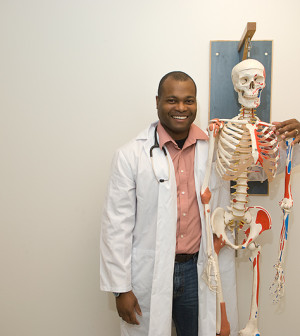- Skip Storing This Everyday Product in the Fridge Door
- Green Tea + B3 Pairing May Boost Brain Health
- Navigating Your Midlife Crisis: Embracing New Possibilities
- City Raccoons Showing Signs of Domestication
- Mapping the Exposome: Science Broadens Focus to Environmental Disease Triggers
- One Week Less on Social Media Linked to Better Mental Health
- Your Brain Changes in Stages as You Age, Study Finds
- Some Suicide Victims Show No Typical Warning Signs, Study Finds
- ByHeart Formula Faces Lawsuits After Babies Sickened With Botulism
- Switch to Vegan Diet Could Cut Your Greenhouse Gas Emissions in Half
Get Outside, Get Moving to Prevent ‘Gamer’s Thumb’

“Gamer’s thumb” — a repetitive stress injury — can strike anyone who spends a lot of time playing video games. But taking breaks can be just what the doctor ordered, a new study suggests.
“Forcefully pounding a game controller or computer mouse for hours can cause inflammation of the tendons of the hand, as well as neck and back pain,” orthopedic hand surgeon Dr. Dori Cage said in a news release from the American Academy of Orthopaedic Surgeons.
“Parents can identify signs of gamer’s thumb if a child complains about pain or locking and clicking in [their] thumb. To help reduce the risk of kids having this condition, limit their daily gaming to two hours or less,” Cage suggested.
Gamer’s thumb is technically known as De Quervain’s tendinosis. It’s an inflammation of the tendons connecting the wrist to the thumb.
Video game fans can develop the problem when they use their thumbs rapidly and repeatedly.
To prevent injury to the thumb and other parts of the body from electronic game play, the academy offers this advice:
- Take a break from gaming. If you find it hard to stop playing, use software that will alert you when it’s time to do something else.
- Stretch your thumb during breaks. Try holding your hand out in front of you with your palm facing you, and gently bend the tip of your thumb down toward the base of your index finger. Hold for 30 to 60 seconds and repeat 10 times. Or put your palm on a table and lift your thumb up. Hold for 10 seconds, then lower your thumb. Do this 10 times.
- Watch your posture. Slouching could cause back, neck and arm pain.
- Get exercise, especially in the upper body and core, to lower the risk of back problems and reduce hand and arm strain. Running, biking and swimming can help. Aim to get 35 to 60 minutes of exercise a day.
- Don’t play video games if doing so causes pain.
More information
For more about De Quervain’s tendinosis, visit the American Academy of Orthopaedic Surgeons.
Source: HealthDay
Copyright © 2025 HealthDay. All rights reserved.










